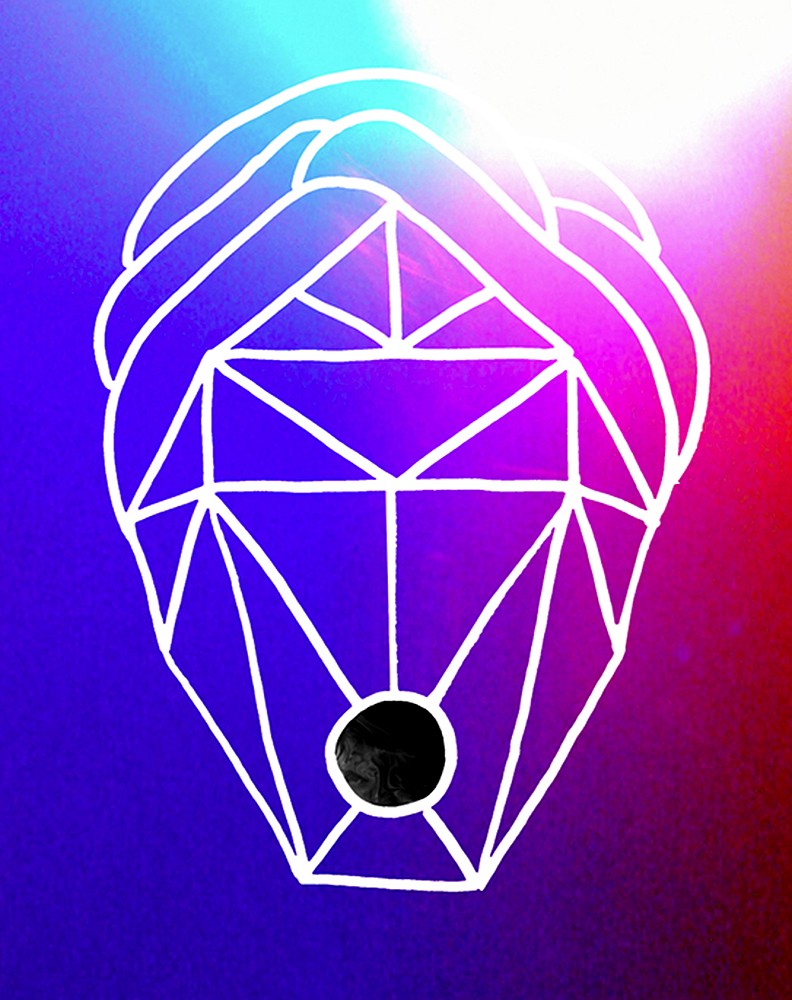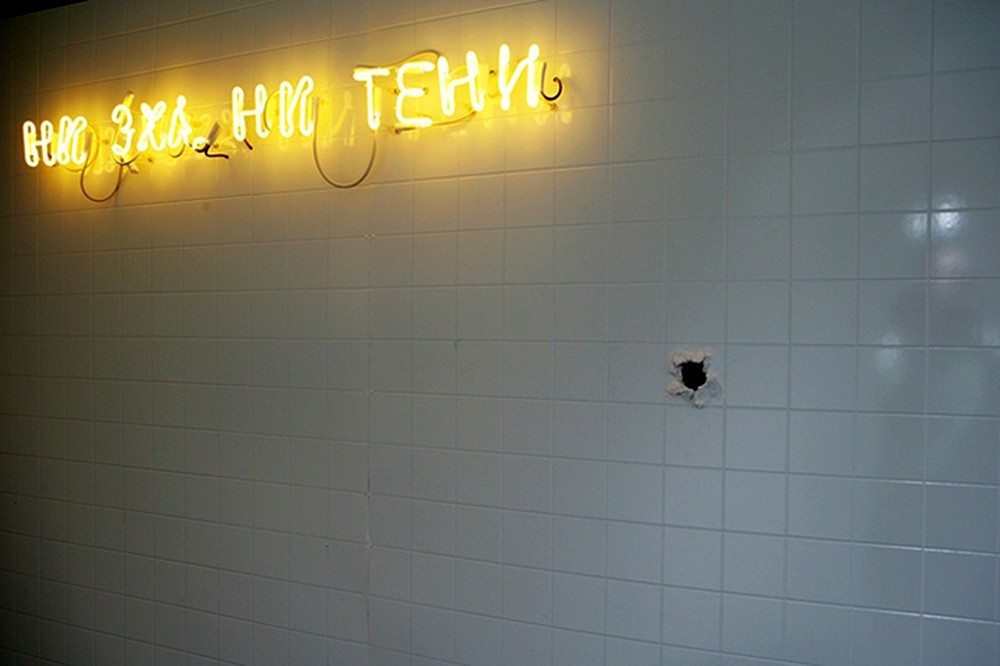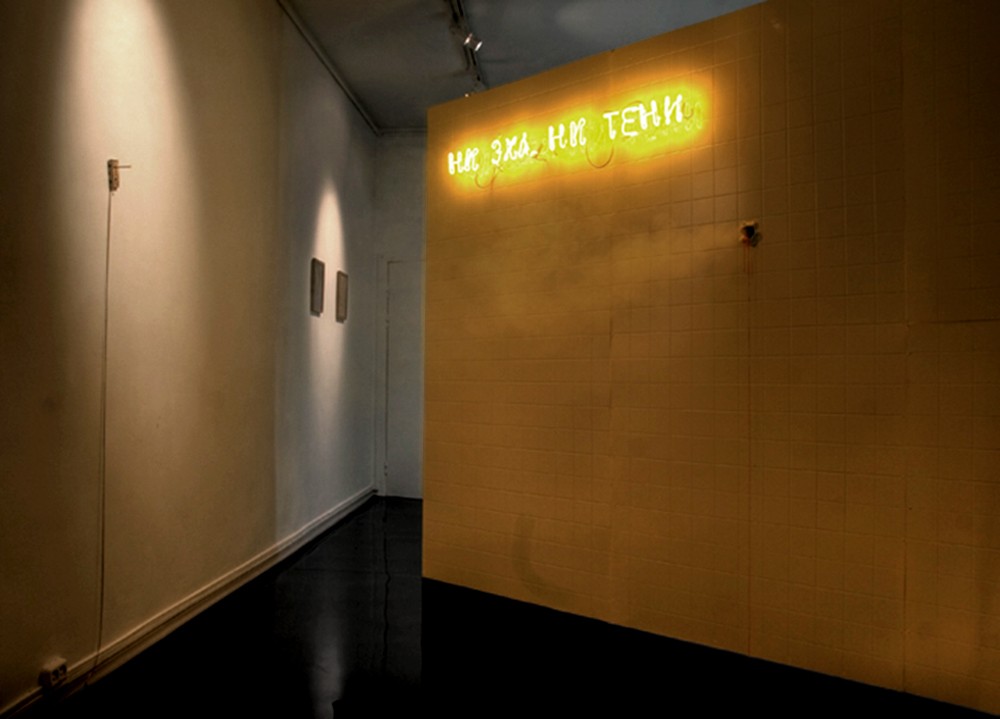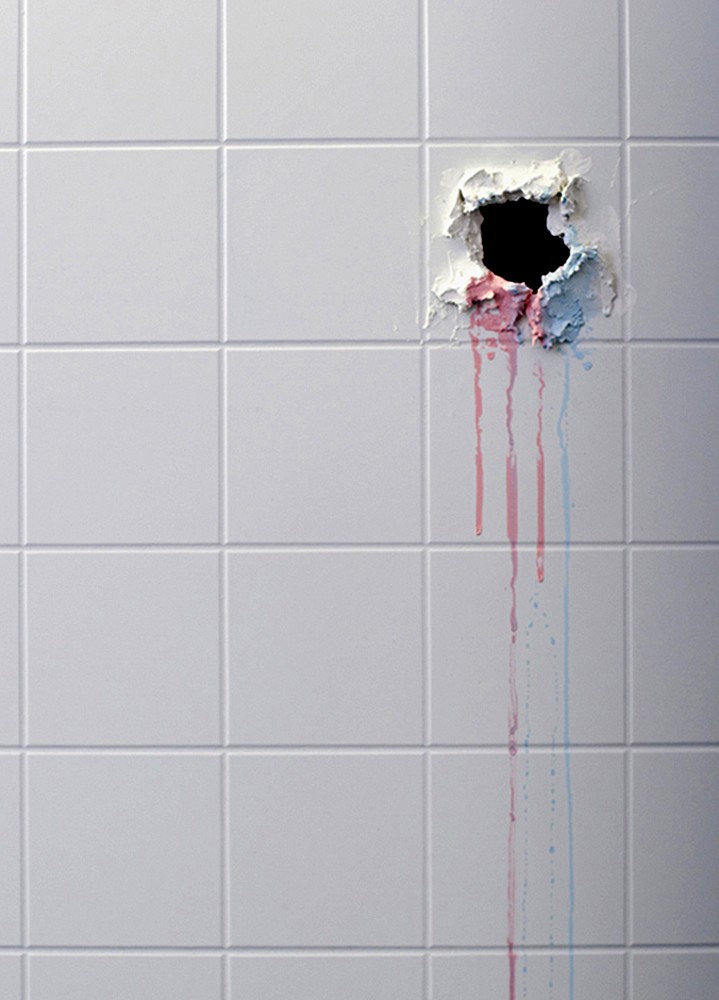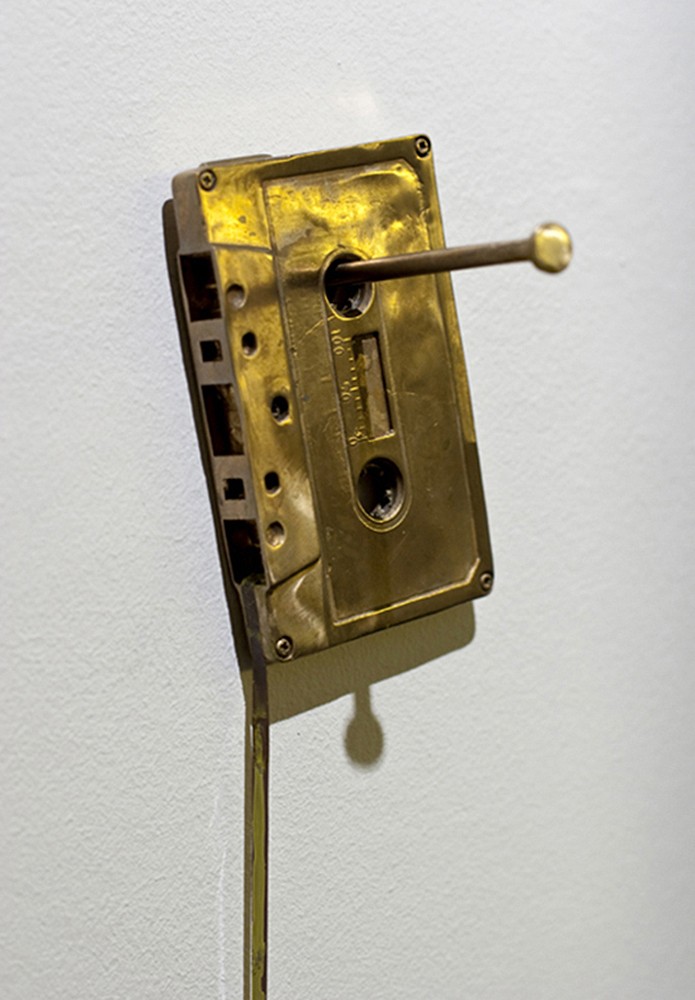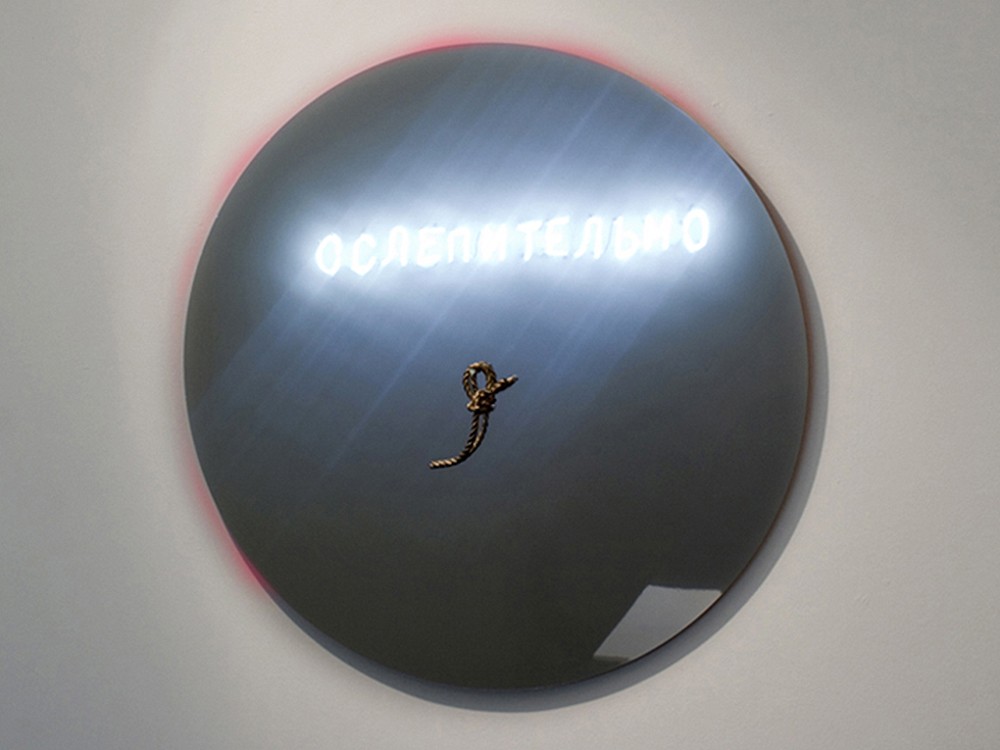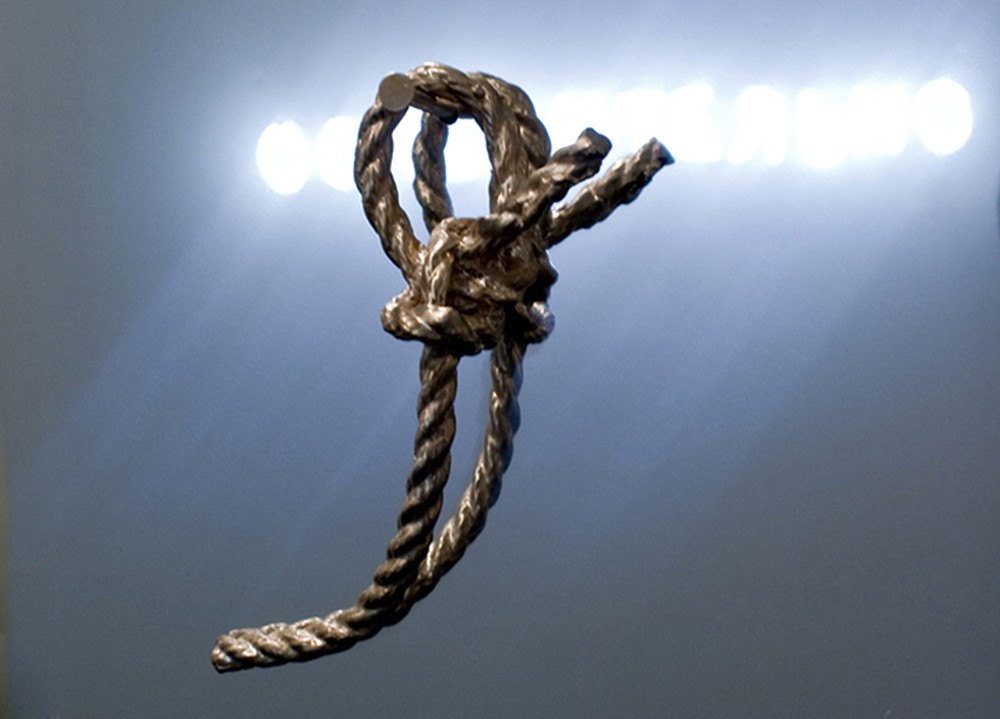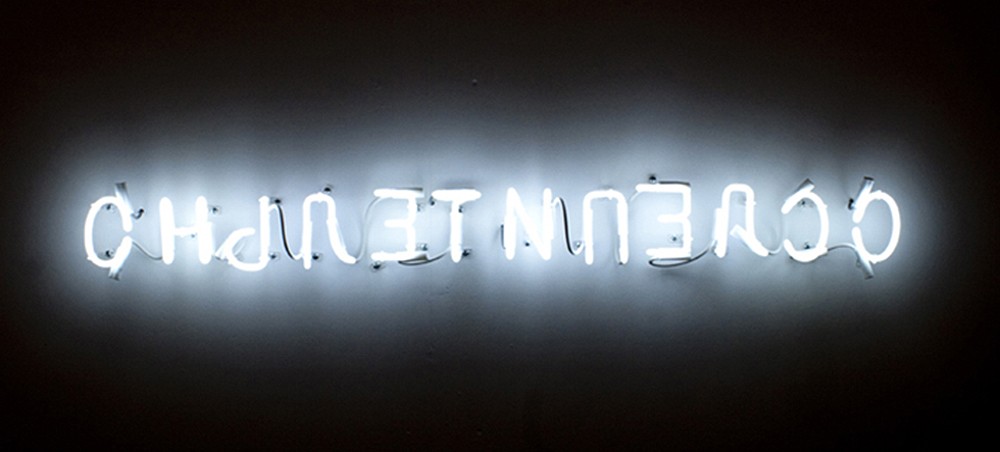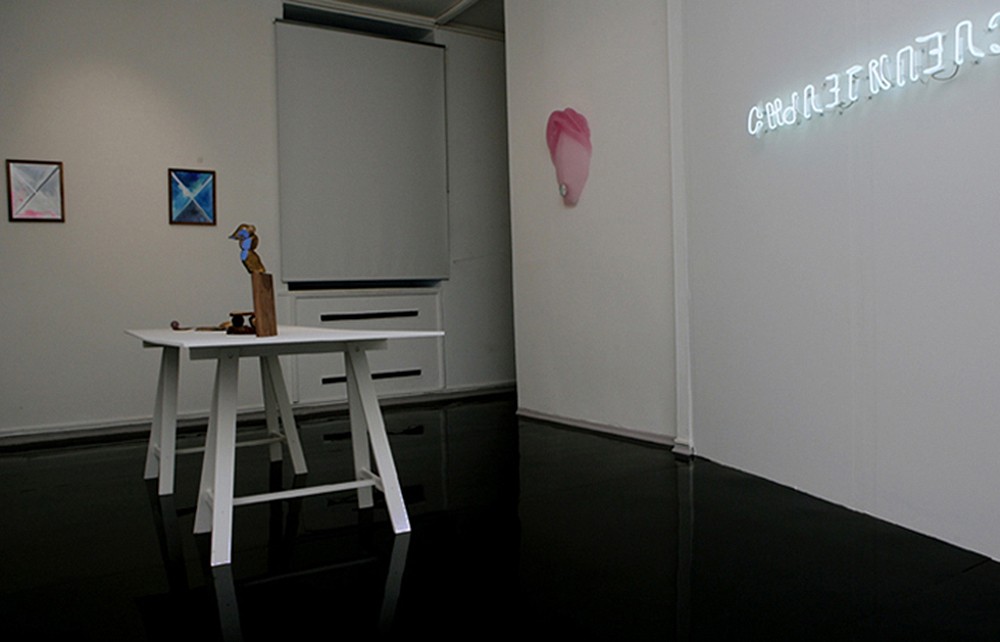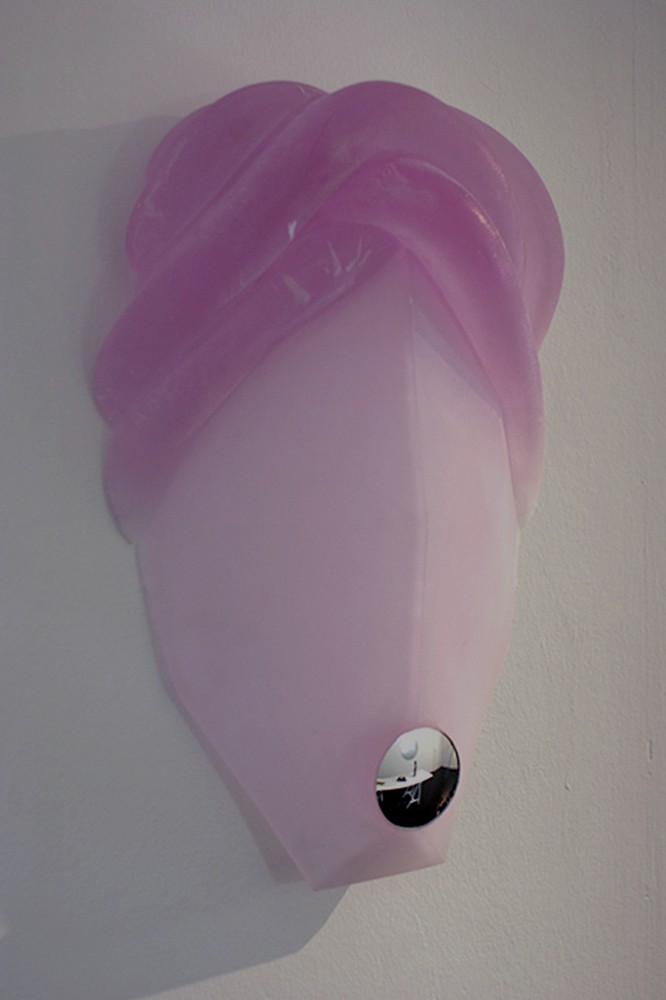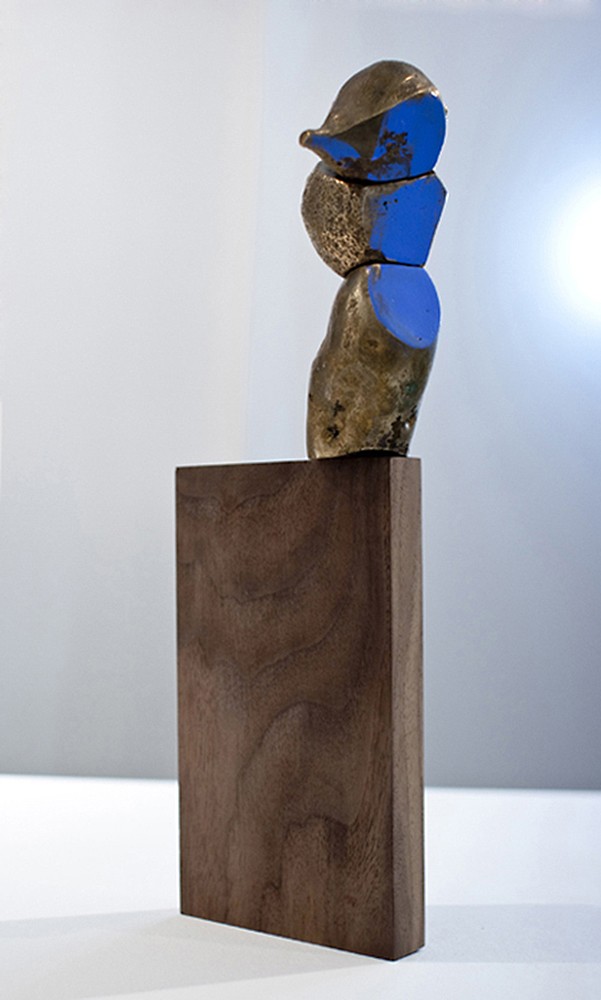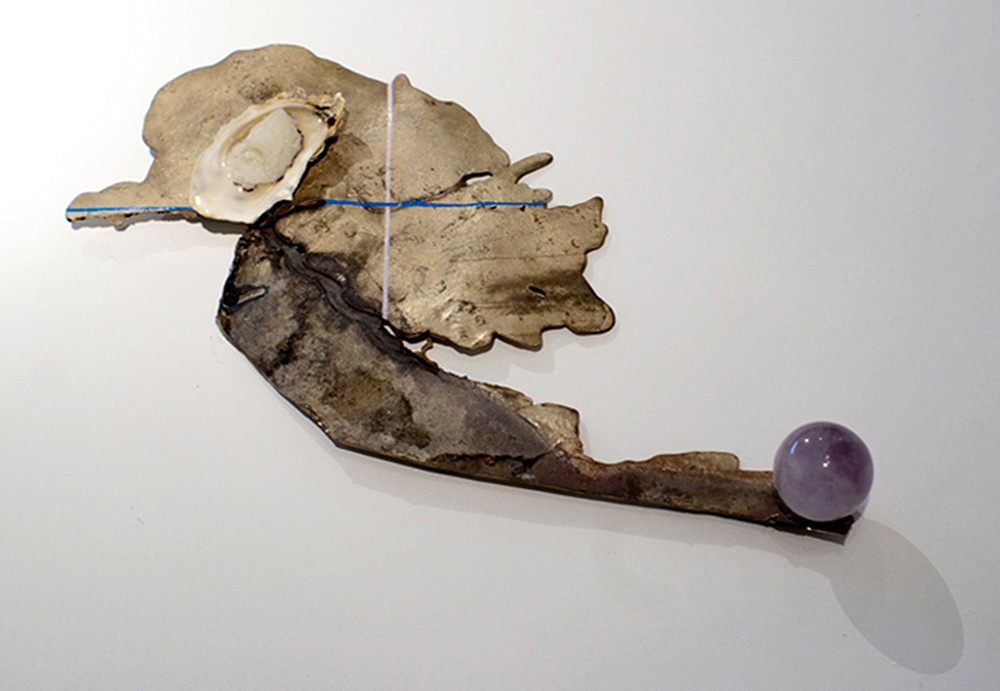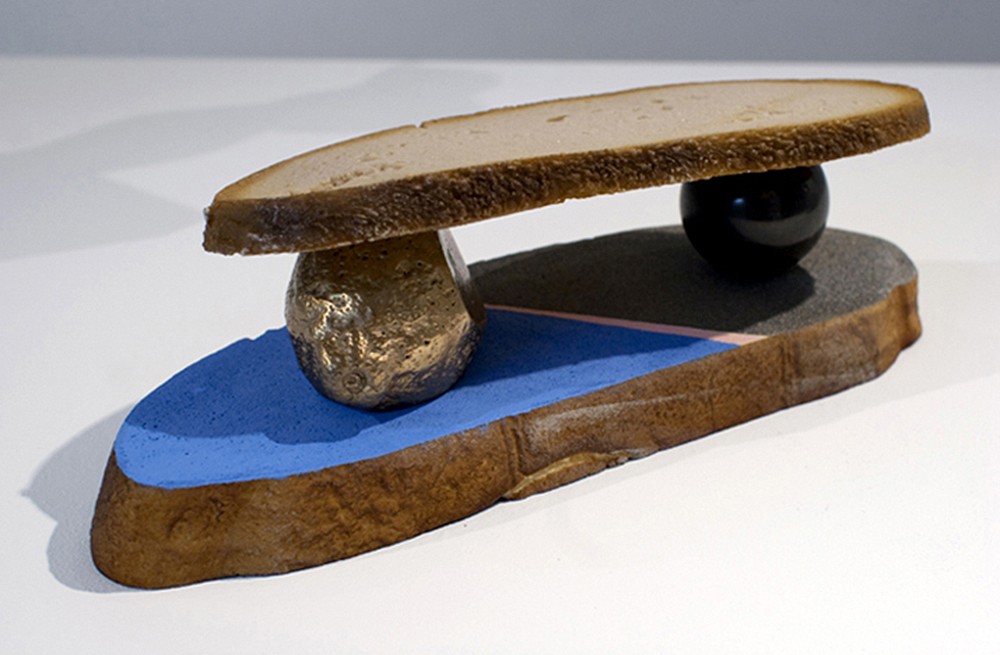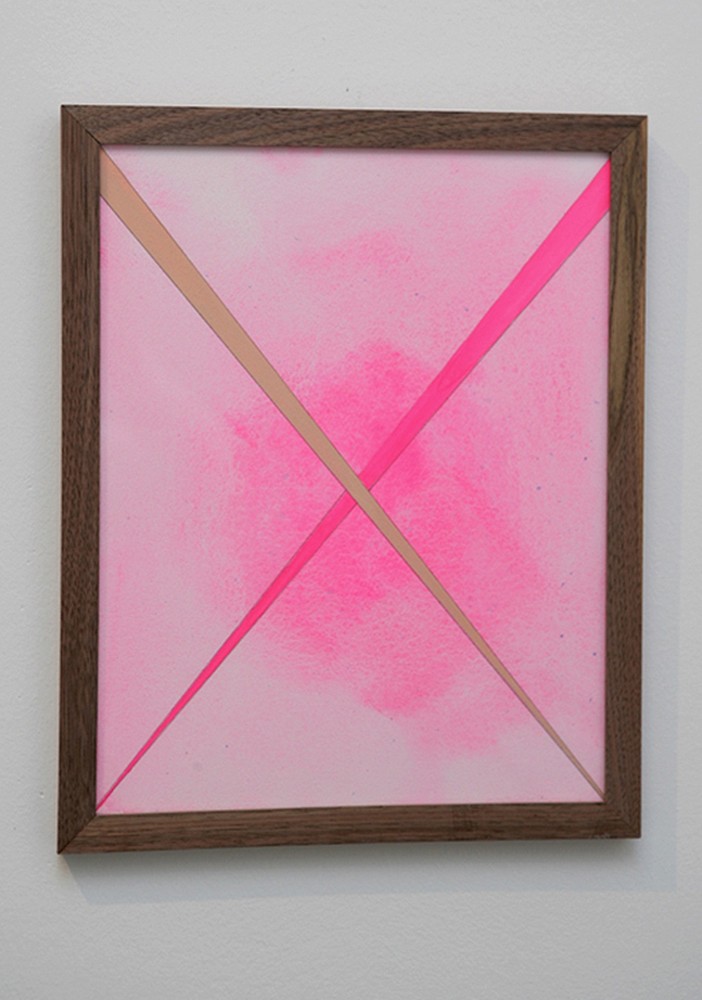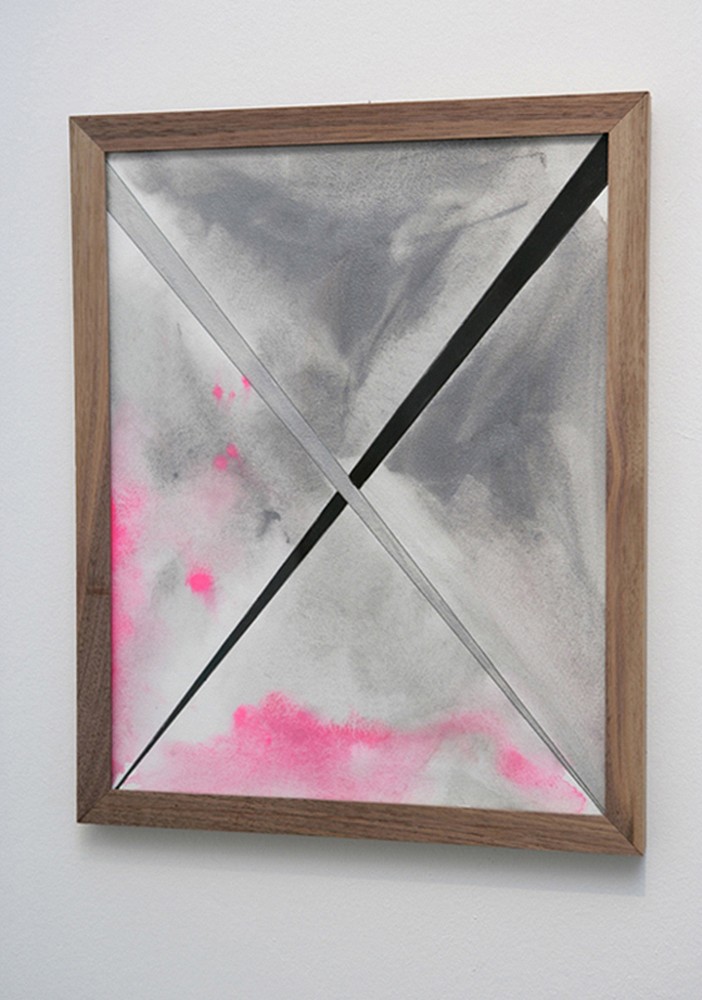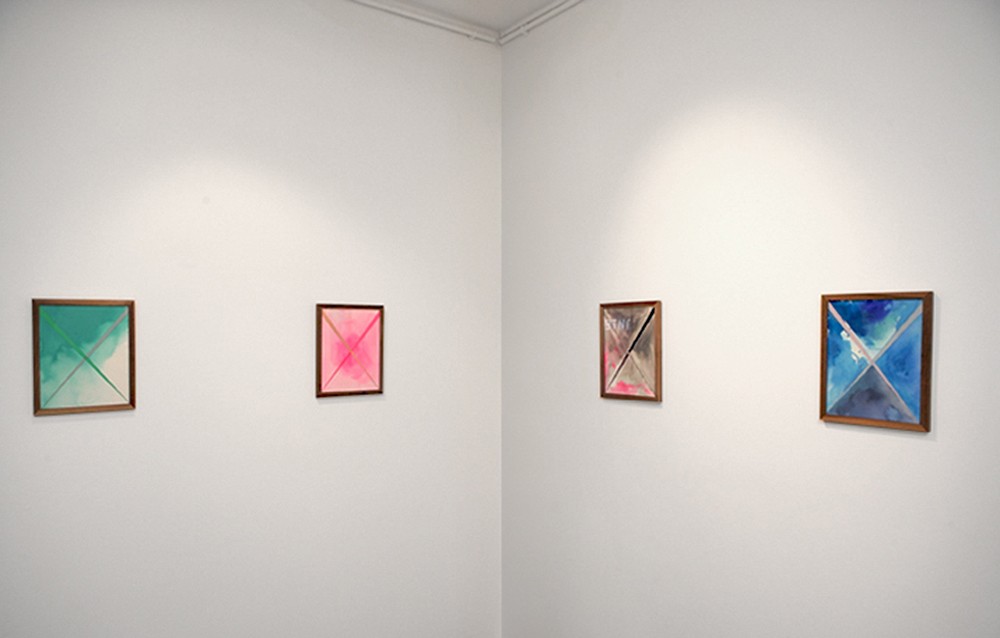No Echo, No Shadow
at galerie Iragui, Moscow/Paris / September 30-October 14, 2009
“I’m amazed by how easily I was able to fight off a lot of complexes. I invented a role for myself, as an actress in America, and it started to please me very much.”
—Natalya Negoda, interview with Playboy, 1989
No Echo, No Shadow, Anton Ginzburg’s first solo show at Moscow’s Galerie Iragui, is an exploration of transition points between the imagined and the actual. The exhibition takes the form of a collector’s cabinet, a set of objets d’art with personal and cultural associations that extend beyond their physical shape. The artifacts in the installation include mask, bronzes, works on paper, and text works—mediums that were crucial for the transformation of European art in the early twentieth century in the work of artists like Brancusi and Man Ray. But Ginzburg’s objects also allude to American minimalism of the 1960s and ’70s, to Richard Tuttle and Richard Serra, thus offering a deliberate misreading of modernism that ignores boundaries of time and place—a mutated, surrogate history of art.
The subjectivity of Ginzburg’s gaze is further underscored through direct references to Leningrad during perestroika, the place and time where he came of age, a period of both personal and historical transition. A 1989 Playboy photo shoot of Natalya Negoda—star of Little Vera, a film key to the transformation of sexual identity for the last Soviet generation—appears in the installation as a diptych of mirrored copies, which undermines the authenticity of the original allowing it to ascend into the collective consciousness of liberation and desire.
A transparent, plastic-cast mask of Medusa is the exhibition’s centerpiece. For Ginzburg image of Medusa, whose petrifying powers are activated by the viewer’s gaze, symbolizes reverse perspective, a switch of agency from viewer to object. By inserting a convex mirror in the mask’s mouth-hole—an allusion to the famous mirror in Jan Van Eyck’s Arnolfini Portrait, which reveals the presence of the artist/creator—Ginzburg manifests that switch, turning the audience’s gaze back onto itself.
The mirror in the mask is one of many reflective surfaces in No Echo, No Shadow; others expand the space of the wall through illusory doublings, or make text pieces written backwards in neon legible. The intersection of multiple, refracted trajectories creates an atmosphere of instability and immediacy—a freeze frame of the artistic process that captures the inevitable failure to realize a vision exactly as it appeared in mind’s eye of the artist at the moment of inspiration. Ginzburg’s play of smoke and mirrors encompasses turning points ripe with potential in political, personal, and artistic histories, and in each case his cuts and juxtapositions yield soft spots vulnerable to misinterpretation and mistakes. Thus No Echo, No Shadow reveals the invisible tension between the intention and the outcome.
— Brian Droitcour

